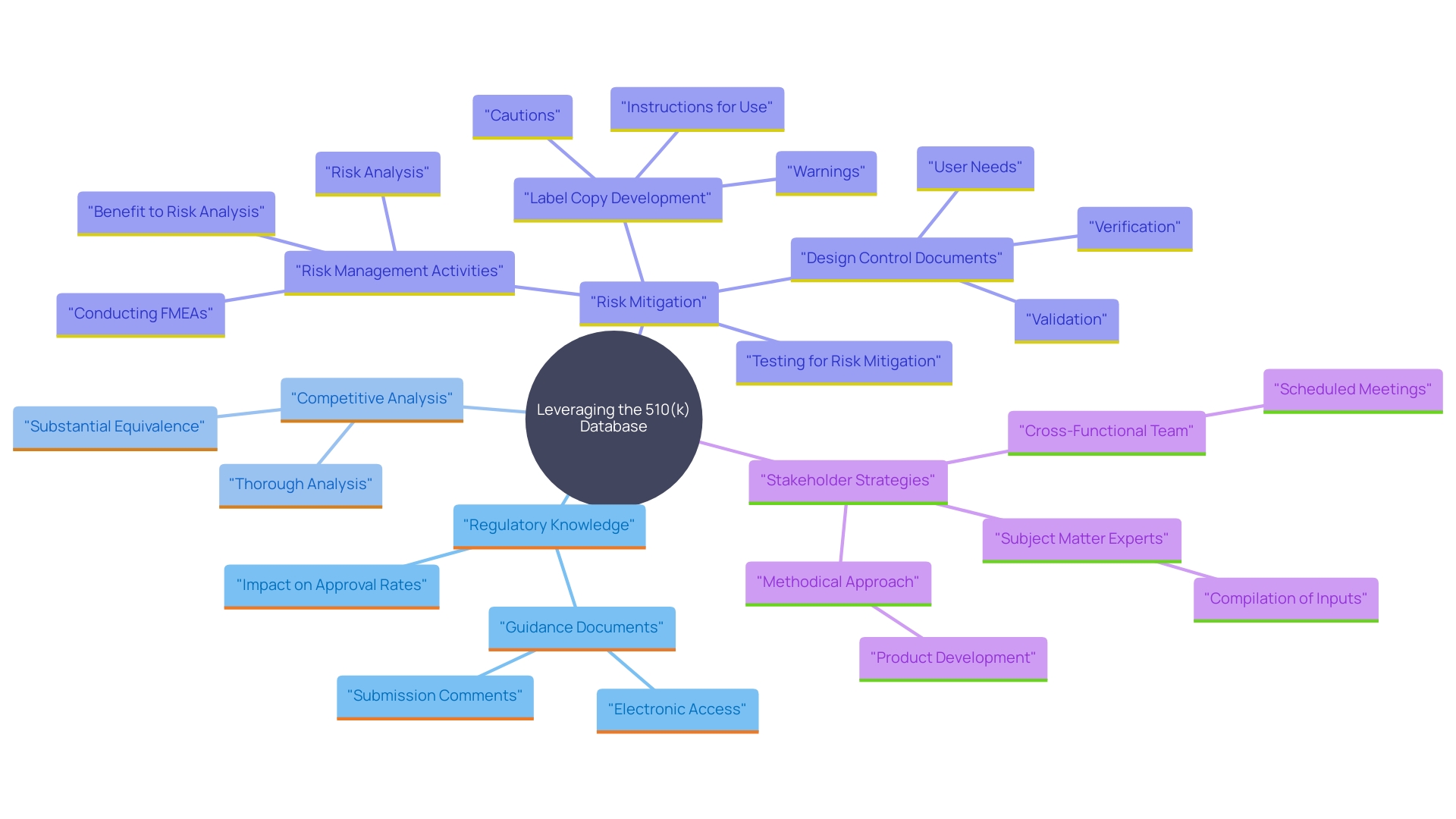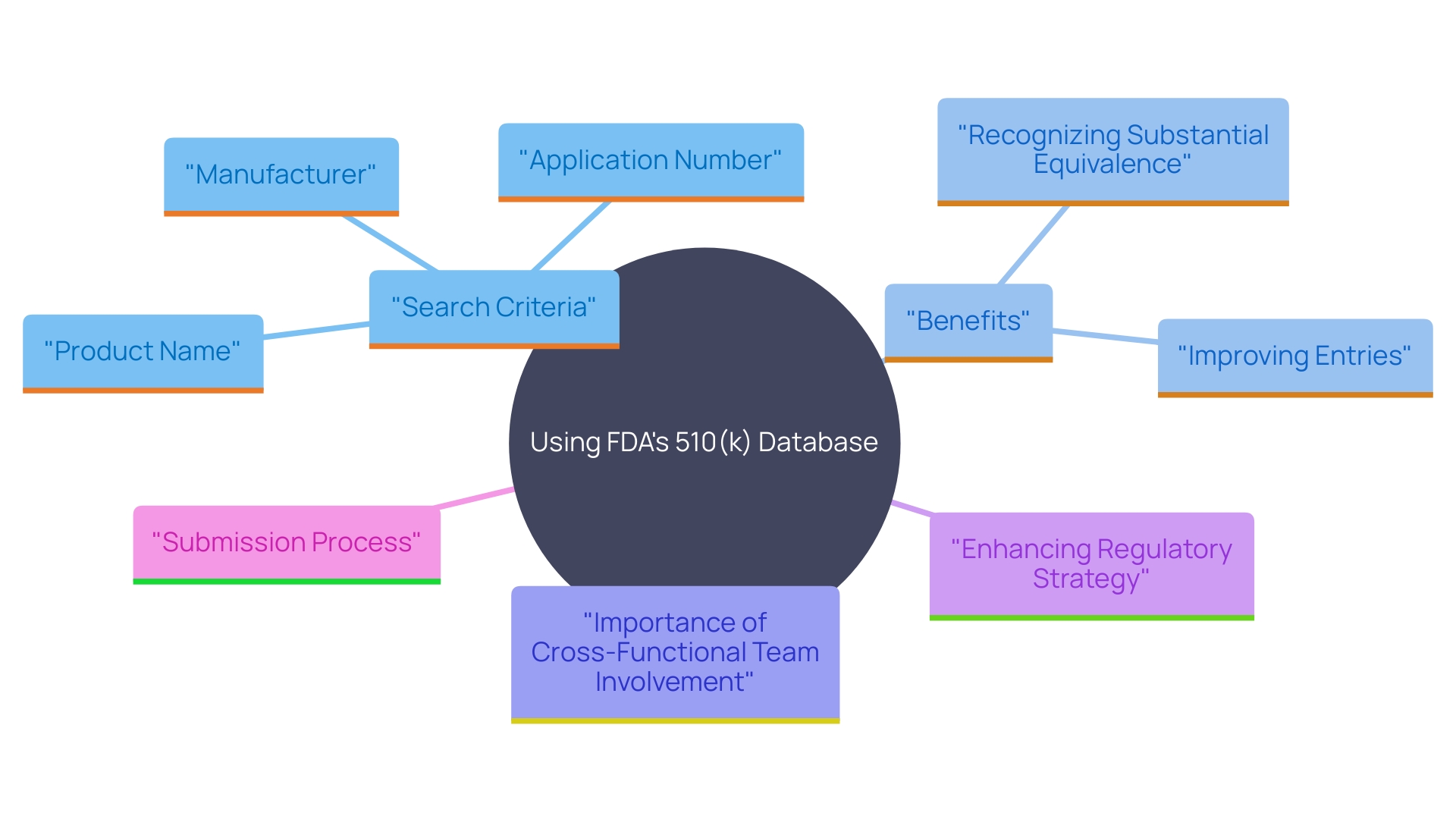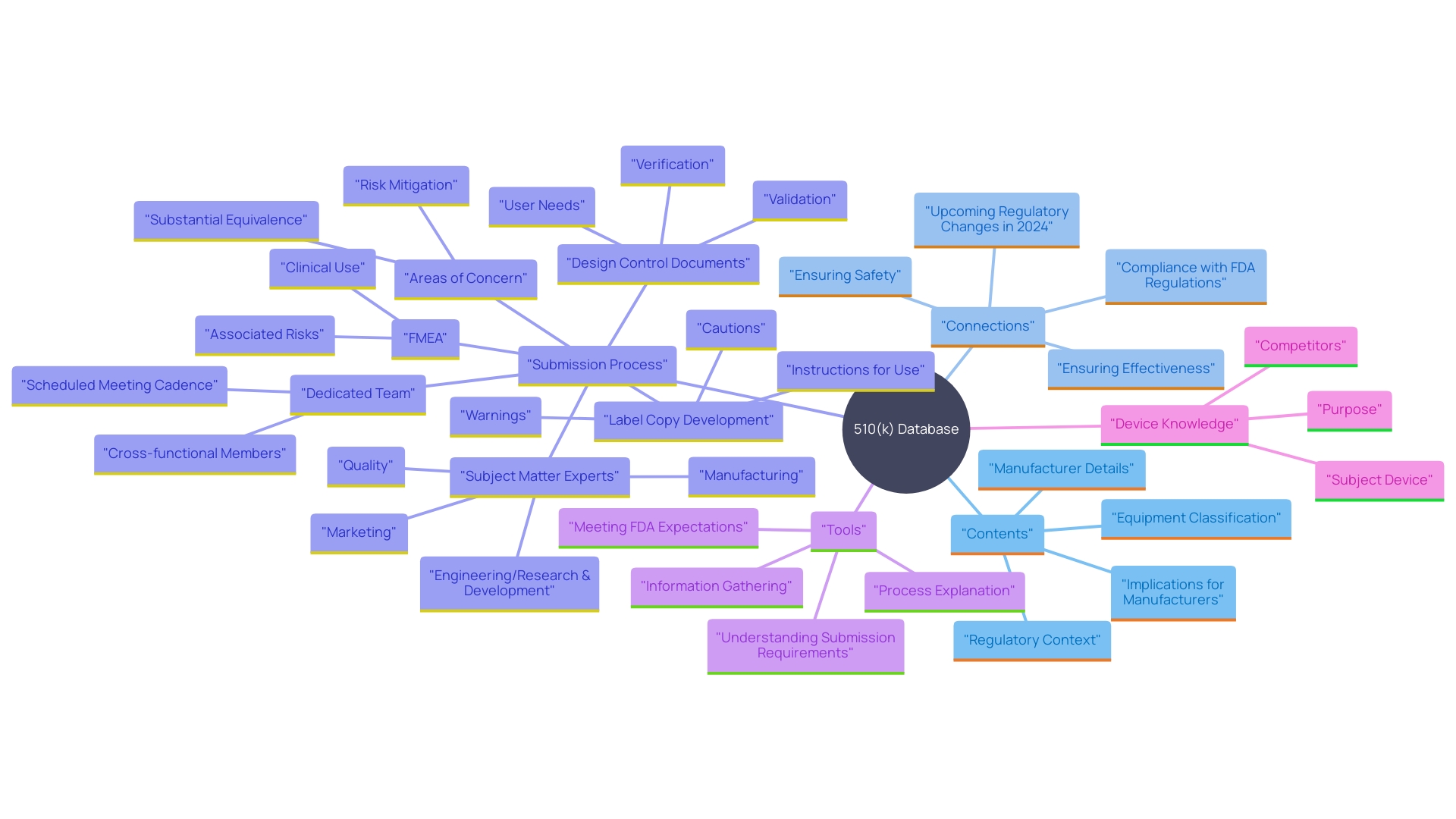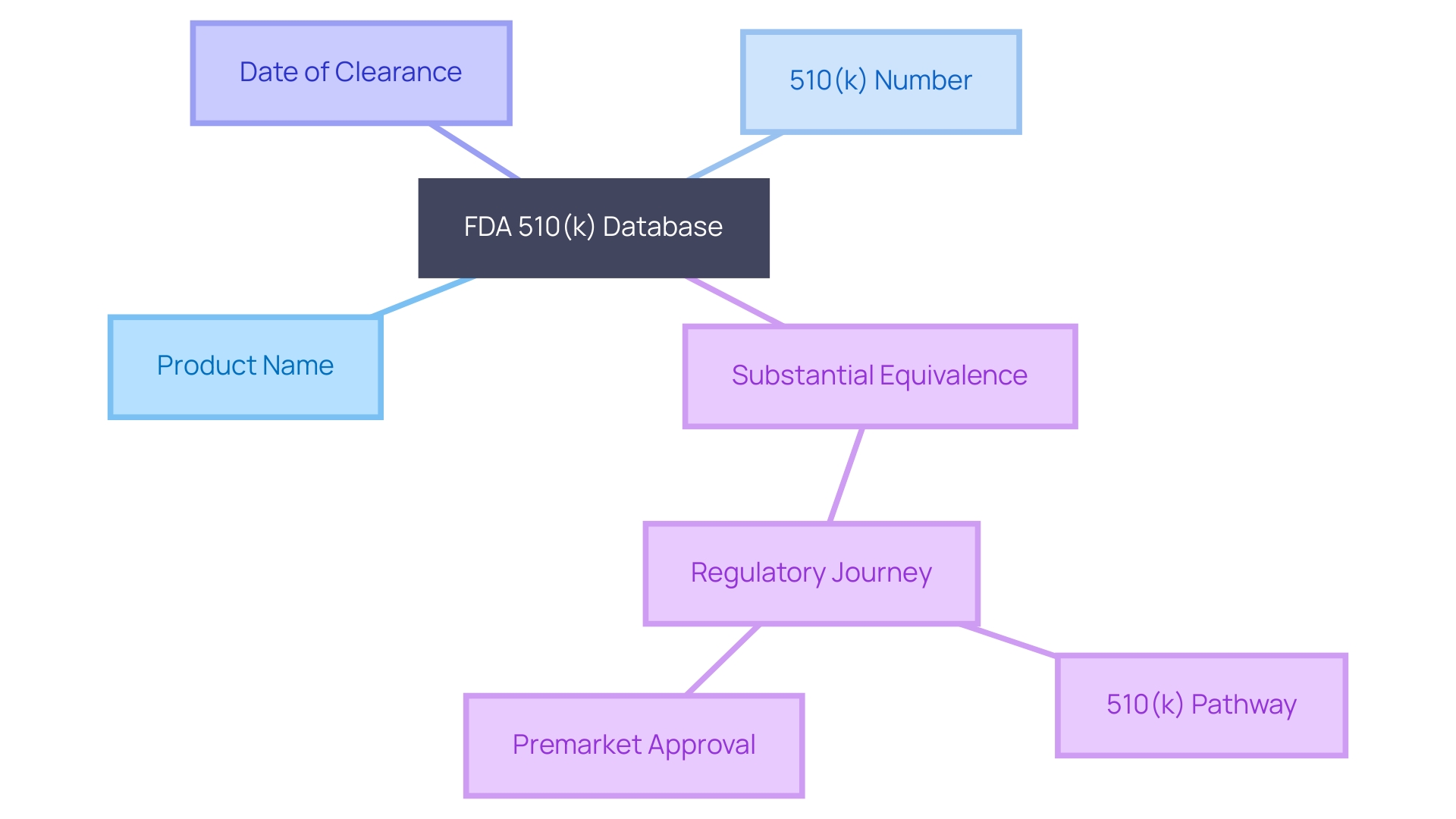Introduction
In the world of medical devices, navigating regulatory pathways is a crucial aspect of bringing innovative products to market. The FDA's 510(k) Database stands as an indispensable resource, offering a streamlined route for manufacturers to secure marketing clearance for their devices by demonstrating substantial equivalence to legally marketed counterparts. This article delves into the significance and utility of the 510(k) Database, providing a comprehensive overview of its functionalities and the types of information it encompasses.
It also highlights the strategic advantages of leveraging this database for regulatory submissions and offers practical guidance on accessing and effectively utilizing its wealth of data. Whether for understanding the competitive landscape, ensuring compliance, or expediting the approval process, the insights provided here are invaluable for industry stakeholders aiming to navigate the complexities of medical device regulations.
What is the 510(k) Database?
The FDA's 510(k) Database is an essential tool for accessing records of medical products that have received marketing clearance. According to section 510(k) of the Federal Food, Drug, and Cosmetic Act, manufacturers must submit a premarket notification to the FDA to show that their product is substantially equivalent to a legally marketed Item. 'ThIs process, governed by sectIon 513(I)(1)(A) of the Act, allows for a quIcker path to market, partIcularly for Class I and Class II products, which make up the majority of 510(k) clearances.'. In fact, only about 1% of medical instruments undergo the more rigorous Premarket Approval (PMA) process.
The 510(k) database offers extensive information on these applications, including product descriptions, intended uses, and the testing performed to demonstrate safety and effectiveness. For example, iRhythm Technologies recently revealed the approval of their first 510(k) application, highlighting the significance of this route in introducing innovative medical products to the market swiftly.
Furthermore, the database serves as a critical resource for understanding the competitive landscape. By examining Summaries of Safety and Effectiveness (SSEs) available in the database, stakeholders can identify predicate devices with similar technological characteristics and intended uses, facilitating the development of comparative analyses. This approach not only assists in the preparation of a robust 510(k) application but also ensures compliance with FDA expectations regarding safety and effectiveness.
The FDA's guidance emphasizes that meeting the standard for substantial equivalence does not automatically guarantee a product's safety and effectiveness. This highlights the significance of thorough testing and careful documentation throughout the process of presenting. By leveraging the 510(k) database, manufacturers can better align their device development with regulatory requirements, ultimately contributing to more efficient and successful market introductions.
Why Use the 510(k) Database for Regulatory Strategy
Leveraging the 510(k) Database is indispensable for manufacturers and regulatory professionals aiming to navigate the regulatory landscape effectively. By scrutinizing previous entries and approvals, stakeholders can discern patterns and requirements crucial for successful proposals. This analysis aids in understanding the competitive environment and informs product development strategies, thereby reducing the risks of delays or denials in the approval process. According to a study by Mohammad Zhalechian and colleagues, the ambiguity in the 510(k) pathway has led to high recall rates, underscoring the importance of thorough analysis to mitigate potential pitfalls. As iRhythm’s CEO Quentin Blackford emphasized, consecutive entries and a clear grasp of expectations are essential for prompt approvals. Furthermore, a recent survey uncovered that almost two-thirds of manufacturers believe their regulatory knowledge is insufficient, which further highlights the necessity for extensive database use. By adopting a methodical approach and leveraging available data, stakeholders can accelerate their time to market while ensuring compliance.

How to Access and Use the 510(k) Database
Navigating the FDA's 510(k) Database is a crucial ability for anyone involved in medical product applications. This thorough tool, accessible on the FDA’s official site, enables users to conduct in-depth searches using different criteria such as product name, manufacturer, or application number. 'The intuitive interface not only allows filtering of results but also offers access to specific information about each entry, which is essential for grasping the environment of existing equipment and their regulatory routes.'.
Comprehending how to effectively use this database can simplify the process significantly. As part of collecting the essential details for a 510(k) filing, the database acts as a crucial resource in recognizing items that have earlier received substantial equivalence. This knowledge is invaluable when planning your own proposal, ensuring that your data aligns with FDA expectations.
Moreover, the database is updated quarterly, ensuring that users have access to the most current information. It includes a wide range of publicly available data, such as clinical trials, safety and efficacy studies, and nonclinical toxicology reports. With this abundance of information, users can improve their entries by comparing them to similar products and grasping the regulatory environment.
Engaging with this tool early in the device development process allows for a more informed approach to regulatory strategy. By doing so, teams can identify areas of concern that may require additional testing or justification, ultimately leading to a more robust and compliant proposal. The involvement of cross-functional teams, including Quality, Engineering, and Regulatory Affairs, is essential in leveraging the database to its fullest potential and ensuring a successful 510(k) submission.

Types of Information Available in the 510(k) Database
The 510(k) Database is a vital resource providing comprehensive information about medical instruments. It contains the equipment name, classification, and manufacturer details, along with a summary of the submitted data. Furthermore, it offers details on specific controls or conditions of approval and the reference instruments used for comparisons.
This database is invaluable for understanding the regulatory context and market positioning of a product. For instance, it duplicates premarket notification submissions, summarizing safety and effectiveness data while excluding patient identifiers and trade secrets. This comprehensive data assists in recognizing potential risks and ensuring substantial equivalence to predicate instruments.
Additionally, the database aids in regulatory adherence by recording modifications in specifications, intended use, and other essential aspects. 'This information is crucial for manufacturers, as it helps simplify the filing procedure and meets FDA expectations.'. 'With significant regulatory changes anticipated in 2024, maintaining up-to-date knowledge of the 510(k) Database becomes even more critical for navigating the evolving landscape of medical equipment regulations.'.

Conducting a Search in the 510(k) Database
The 510(k) Database is a crucial resource for finding particular medical equipment applications and ensuring adherence to FDA regulations. Users have the flexibility to search using various parameters such as generic names, classification names, or product codes, which significantly refines the search results. The database's advanced search functionalities cater to both broad and specific inquiries, making it an invaluable resource for identifying relevant entries efficiently.
The database includes comprehensive details on studies and trials for clinical safety, efficacy, pharmacology, and toxicology. Updated quarterly, the database ensures users have access to the most current information, including all open and recently closed studies. This strong search function is essential for experts in clinical research and development, as it aids in the recognition of substantially equivalent products, a key requirement for 510(k) applications.
Utilizing these tools efficiently can promote a more comprehensive grasp of the clinical application and related risks of instruments, which is crucial for crafting a successful proposal. As the FDA continues to update and improve their electronic submission portals, users can expect an enhanced experience with additional filters and information displays to streamline the process further.

Understanding Search Results: Key Information and Fields
When examining search outcomes in the FDA 510(k) Database, users will discover important fields such as the product name, 510(k) number, and the date of clearance. These fields are critical in understanding the regulatory journey of a product. The summary section is particularly valuable as it provides detailed insights into the product's intended use and any testing results submitted to demonstrate substantial equivalence to a legally marketed item. 'Given that only 1% of medical instruments undergo the more rigorous Premarket Approval (PMA) process, the 510(k) pathway is a faster route to market for Class I and Class II products.'. This pathway, which permits new products to be marketed if they are demonstrated to be substantially equivalent to existing items, is central to the database's purpose. Comprehending these areas and the data they provide is essential for assessing a system's compliance and safety.

Tips for Effective Searching: Broad Terms and Categories
To enhance the effectiveness of searches in the 510(k) Database, leveraging broad terms and categories can be highly beneficial. This method allows users to capture a wider spectrum of relevant entries, similar to how the Sec's EDGAR system enables users to filter filings by date, company, and other categories. Combining general descriptors with specific product codes or classifications can yield comprehensive results. The FDA's updated IT strategy for 2024-2027 aims to modernize technological capabilities, which can further aid in efficient data retrieval and analysis. Utilizing these strategies provides a deeper understanding of the market landscape, akin to the user-friendly visualization tools that pinpoint trends and patterns in other advanced databases.
Limitations and Considerations: Exempt Devices and Withdrawn Submissions
The 510(k) Database has certain limitations that users need to be aware of. For instance, some items are exempt from 510(k) requirements and will not appear in the database. Additionally, the database includes withdrawn submissions which can provide valuable insights into regulatory challenges faced in the past. This information can be crucial for manufacturers aiming to understand the landscape and navigate the approval process more effectively.
David Rosen, a former FDA adviser, highlighted how changes in regulation could lead to uncertainties. Therefore, users must approach the database with a clear understanding of these nuances to interpret the data accurately. For example, the FDA has posted classification orders and decision summaries for items classified through the De Novo process since 2010, which are updated weekly. These summaries, while high-level, can be instrumental in understanding the regulatory expectations and special controls required.
Understanding these factors is crucial, particularly considering the FDA's continuous efforts to enhance clarity and safety through initiatives such as active postmarket monitoring. This system reviews evidence from various data sources to detect potential safety issues that may not be reported otherwise. By acknowledging these constraints and utilizing the available information, users can improve their strategic planning and decision-making procedures for 510(k) applications.
Additional Resources and Guidance for Medical Device Manufacturers
Beyond the 510(k) Database, manufacturers can leverage a variety of resources provided by the FDA to enhance their regulatory strategy and compliance efforts. The FDA regularly updates its guidance documents and industry updates, which are crucial for staying informed on the latest regulatory requirements and best practices. For instance, the recent draft guidance on the use of real-world evidence to support regulatory decision-making for medical products emphasizes the FDA's changing expectations for data quality and filing processes.
Engaging with these resources can significantly aid in meeting regulatory standards. As Mike Drues from Greenlight Guru explains, "Just because you're meeting the standard, that just means that you're passing... That doesn't necessarily mean that you're making a safe and effective product." Therefore, it's essential to not only comply but to exceed the minimum requirements to ensure the safety and effectiveness of medical devices.
Additionally, networking with industry associations and attending relevant workshops can further enhance knowledge and competencies. The FDA often hosts public workshops and encourages stakeholders to present their views and recommendations. For instance, during a recent public workshop, stakeholders were invited to register and present oral comments on improving meeting processes. Such interactions provide valuable insights and foster collaboration among industry professionals.
'Manufacturers should also consider participating in initiatives like the FDA's Early Payor Feedback Program or utilizing the updated CDRH Customer Collaboration Portal to simplify their application processes.'. These platforms offer opportunities to receive early feedback and track the progress of regulatory submissions, thereby improving efficiency and compliance.
By actively engaging with these FDA resources and industry networks, manufacturers can better navigate the complexities of the FDA approval process and ensure their products meet the highest standards of safety and efficacy.
Conclusion
The FDA's 510(k) Database serves as a pivotal resource for medical device manufacturers aiming to navigate the regulatory landscape effectively. By understanding its functionalities and leveraging the wealth of information it provides, stakeholders can streamline the submission process, enhance compliance, and mitigate risks associated with device approvals. The database not only offers insights into previously cleared devices but also informs product development strategies, ensuring alignment with regulatory expectations.
Accessing and utilizing the 510(k) Database is crucial for identifying predicate devices and understanding the competitive landscape. The ability to conduct thorough searches and analyze submissions facilitates informed decision-making, ultimately leading to more robust regulatory strategies. Despite its limitations, including the presence of exempt devices and withdrawn submissions, the database remains an invaluable tool for manufacturers committed to ensuring the safety and efficacy of their products.
In addition to the 510(k) Database, manufacturers can benefit from a variety of resources offered by the FDA, including updated guidance documents and industry workshops. Engaging with these resources, along with networking opportunities, can further enhance knowledge and competencies in regulatory compliance. By adopting a proactive approach to utilizing both the database and available resources, manufacturers can improve their chances of successful market introductions while adhering to the highest standards of safety and effectiveness.




